 | Name: Shirley
Overview: Shirley left school at 16 and worked for the Inland Revenue until retirement. When she was diagnosed, her mother was very ashamed. Shirley looked after her parents until they died and then lived alone. She has had to cope alone with severe hypos, but says that living alone makes it easier to keep to a strict diet. She feels that her diet has made her healthier than she would have been if she hadn`t had diabetes. She has a low opinion of doctors, apart from a few consultants, but likes the group meetings held nowadays by specialist nurses.
Hits=3 |
|
|  | Name: Zin Cherry
Overview: Zin`s daughter, Emma, was diagnosed with diabetes at the age of 10, in 1988. While Emma says that after the shock of diagnosis her parents were `really laid back,` Zin remembers a time of high anxiety. However, she managed to hide her worries from Emma and was supported for several years by a very reassuring Diabetes Specialist Nurse called Sally Strang. Emma is well and happy - and her mother`s only regret is that she sometimes spoilt her and didn`t pay enough attention to her sister`s feelings. Nowadays, Zin thinks that diabetes `doesn`t seem such a big deal at all`.
There is also an interview with Zin`s daughter, Emma .
Hits=2 |
|
|  | Name: Patricia Torrens
Overview: Patricia Torrens was one of the earliest dietitians in the UK. She trained at Atholl Crescent domestic science college in Edinburgh and Edinburgh Royal Infirmary, and worked as an assistant dietitian in the part of St. Thomas`s Hospital that was evacuated to Surrey during the Second World War. After the war, she worked as a cook in the main kitchen at St. Thomas`s and as an assistant catering officer at Moorfields Eye Hospital. She was Chief Dietitian at Westminster Hospital from 1951-71 and became Dietetics Adviser to the Department of Health and Social Security from 1971-84.
Hits=2 |
|
| 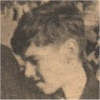 | Name: Fred
Overview: Fred`s family was poor and food was rationed in his early years: he remembers that a Mars bar was cut into slices to last 4 or 5 days! After diagnosis, he was told that `I had to control the diabetes rather than the diabetes control me` and has tried to follow that advice ever since. He lost his sight in 1978 and his second wife left him because she couldn`t cope. He began a successful business making garden furniture and now lives with his third wife, who is also blind.
Hits=1 |
|
|
 | Name: Patrick Grogan
Overview: Patrick Grogan was treated at King`s College Hospital by R.D. Lawrence (co-founder of the British Diabetes Association, now Diabetes UK) and he remembers Lawrence commenting on the amount of carbohydrate at a hospital Christmas party. He has always kept to a healthy diet, has had lots of exercise as a machine-tool fitter and maintenance worker, and has had no diabetic complications. He`s a member of NHS Concern and the West Midlands Pensioners Convention and says that taking an interest in improving society is what keeps him going.
Hits=1 |
|
| 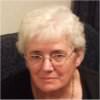 | Name: Lesley Prichards
Overview: Lesley`s daughter, Julie, was diagnosed with diabetes in 1978, aged nearly five, and she was in hospital for three weeks. Parents were not allowed to stay with their children, but Julie enjoyed hospital and decided then that she wanted to become a nurse. (She is now a Diabetes Research Nurse.) Meal times were rigid at first and Lesley and her husband still keep to those rigid times, though Julie does not. Later, while Julie was pregnant, she stayed with her parents whenever her husband worked nights - and Lesley feels that she`ll always have some involvement in her daughter`s diabetes.
Hits=1 |
|
|
 | Name: Gillian McGuinness
Overview: Gillian McGuinness studied human physiology at Manchester University before doing an eighteen-month Diploma in Dietetics at Hollings College in 1977, when there was a ‘dire shortage of dietitians`. She worked in NHS and private hospitals in Manchester and Bristol and then at Birmingham Children`s Hospital from 1990. She remembers that in the late 1970s, children with diabetes didn`t always grow very well or get full employment opportunities or take for granted that they would have children, whereas now she expects them to live long healthy lives and be able to achieve all the same things as people without diabetes.
Hits=1 |
|
| 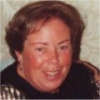 | Name: Christina
Overview: Christina`s parents came to Oxford from Eire in 1948 and she was brought up on an Irish diet of bacon, cabbage and potatoes. Her father worked in a car factory and her mother as a cook and cleaner. Christina went to a Catholic school until she was 15 and then started work folding paper at the University Press, where she met her husband. They married when she was 18 and had two sons. She worked as a cleaner in a private school for 31 years until registered blind in 2001, four years after being diagnosed with diabetes.
Hits=1 |
|
|
 | Name: Emma Cherry
Overview: By the time Emma Cherry was diagnosed in 1988, GPs were familiar with childhood diabetes; hospital children`s wards were used to dealing with it, and Emma remembers a wonderful diabetes specialist nurse who showed her how to inject herself, and later called at her home twice daily to supervise her early attempts. Her schools, university, and colleagues at work all accepted her without any fuss, and she has never been made to feel `different`. Injections and blood tests are such a routine part of her life that she wonders how she would cope with a cure!
There is also an interview with Emma`s mother, Zin Cherry.
Hits=1 |
|
|  | Name: Kevin Jones
Overview: Kevin Jones` father worked in a Welsh mine, then joined the Royal Navy and worked his way up from sick berth attendant to Lieutenant Commander. Kevin went to various grammar schools in Navy ports and left at 18 to train as an accountant. He worked for several large companies, unhindered by his diabetes, but has had more problems in recent years. In 2002 his leg was amputated, but he had great help from the Limb Centre and now walks and drives with an artificial limb. He loves jazz, and is pictured with a statuette of a jazz musician.
Hits=1 |
|
|
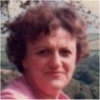 | Name: June Hill
Overview: June Hill had never eaten much sweet food and had always had plenty of exercise so her diagnosis brought little change and had no effect on her career as a teacher and then a nurse. She went on tablets in 1983, and was put on insulin in 1995, when she had a serious illness unconnected with diabetes. She took no interest in her own diabetes for many years until her diabetic mother became housebound. Then she began to inform herself about long-term implications. She is very fit and is enjoying her retirement.
There is also an interview with June Hill`s husband, Tony Hill
Hits=1 |
|
|  | Name: Jeanette
Overview: Jeanette left school at 15 and worked in one of the first supermarkets in Malvern, where she met her husband. They married when she was 17 and had two children. During her second pregnancy, she had high glucose levels, but it wasn`t until a year later that she was diagnosed with diabetes and admitted to hospital for 5 weeks. She continued to use a glass syringe until c.2002. She feels that diabetes has caused her few problems, but she had to give up work because of osteoarthritis at the age of 44.
Hits=1 |
|
|
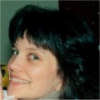 | Name: Julia
Overview: Julia was the first member of her family to go to university, and she taught in a primary school before specialising in teaching dance. Between her diagnosis in 1989 and the recording of this interview in 2004, she spent time in hospital for a variety of reasons, including the births of her three daughters. The biggest changes she noticed during these years were the increasing role of specialist nurses and also a shift to patient control: at first she was automatically put on a drip, whereas later the staff began to trust her to manage her own diabetes.
Hits=1 |
|
| 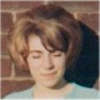 | Name: Margaret
Overview: Margaret developed pneumonia from living in a damp prefab and missed a lot of school. At 9 she attended an open-air school for sick children and was ostracised at secondary school because of her different background. She left at 15 with no qualifications, but earned more as a seamstress than her father did on the railways. She was diagnosed at 18 and married at 20. Her husband was in the RAF and she was treated in RAF hospitals. She has had serious hypos and many health problems, but enjoys making spectacular iced cakes and playing with her grandchildren.
Hits=1 |
|
|
 | Name: Joanne Pinfield
Overview: Joanne Pinfield was only 5 when she had the frightening experience of waking from a coma in hospital and she has found diabetes frightening for much of her life. At school she felt isolated by being the only person with diabetes. She left at 16 to work in a pottery with a sympathetic boss who helped her not to feel ashamed of diabetes, but then reverted to hiding her condition during 12 years working in a factory. Her father`s death in 2001 prompted her to take better care of herself. She married in 2002 and runs a limousine business with her husband.
There are also interviews with Joanne`s mother, Mary Potter, and husband, Nick Pinfield.
Hits=1 |
|
|  | Name: Richard Gee
Overview: Richard Gee has been a G.P. in Lower Gornal, on the edge of the Black Country, since 1972. During the 1980s, a diabetes consultant from Wordsley Hospital helped his practice, and other training practices in the area, to set up mini-clinics and make links with a Diabetes Resource Centre at the hospital. In Dr. Gee`s view, the Payment by Results system, introduced in 2004, encouraged hospitals to reverse the flow of patients from hospital to GP care - but in his area many patients have preferred to stay with their` GPs, supported by a strong diabetes community nursing team.
There is interview with another Black Country GP, from one generation earlier, Dr. Joe Needoff.
Hits=1 |
|
|
 | Name: Lisa McGregor
Overview: Lisa McGregor was diagnosed shortly before starting secondary school. She spent two weeks in hospital, where she learnt to inject herself from the outset. She was given a `traffic light` book, listing forbidden and permitted foods, but didn`t follow the diet strictly. She injected herself twice daily for 20 years until moving to a more flexible regime, with four injections, in 2003. She describes it as a DAFNE regime (Dose Adjustment for Normal Eating), but hasn`t attended a DAFNE training course. She has had few health problems, but several frightening experiences as a result of hypos.
Hits=1 |
|
| 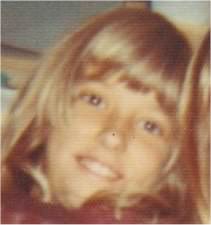 | Name: Rachel
Overview: In 1996, Rachel volunteered to work on a diabetes helpline, because she felt she`d learnt so much about diabetes from her family. Her older brother, Tom, and younger sister, Anna, were both diagnosed in their teens. Her parents were less traumatised by the second diagnosis and Rachel wonders if this explains the different ways in which her siblings have managed their diabetes. She has also observed how her brother has handled his own son`s diabetes; how a close friend coped with her child`s diagnosis; and how her mother-in-law struggled with Type 2 diabetes in her later years.
Hits=1 |
|
|
 | Name: Pam Dyson
Overview: Pam Dyson has been involved with the nutritional management of diabetes and obesity for 25 years. She began her working life with the Medical Research Council at the Dunn Nutrition Unit in Cambridge and since then has practised as a community dietician, diabetes specialist dietician for both in and out-patients and has been closely involved with clinical research. Since 2004, she has been employed by Oxford University as a diabetes research dietician. Her main interests are in the delivery of diabetes dietary education, behavioural aspects of lifestyle change and weight management.
Hits=1 |
|
| 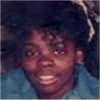 | Name: Barbara
Overview: Barbara was one of the last generations to qualify as a nurse without a university degree. After training at the Queen Elizabeth Hospital, Birmingham, from 1988-91, she was a staff nurse on general medical wards until 1996, when she began to specialise in diabetes at the University Hospital in Selly Oak, Birmingham. Since then, she has been called variously a Diabetes Nurse Educator, a Diabetes Specialist Nurse and a Clinical Nurse Specialist. Although she feels well-qualified by experience, she would like to take a degree. Another ambition is to provide more culturally-specific care for patients who share her Caribbean background.
Hits=1 |
|
|
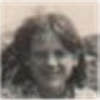 | Name: Mary
Overview: Mary`s father was a baker and her mother a factory worker. When she was diagnosed, the hospital suggested that they should buy a book on diabetes by R.D. Lawrence, but she doesn`t think they read it. She feels she was given very little information, and remembers thinking that her diabetes might disappear when she began to have periods at 15. She made little effort to control her diabetes until she went to a clinic in Oxford in 1983. She works as a podiatrist and reckons that about 75% of her patients have diabetes
Hits=1 |
|
|
| Search returned 25 matches |